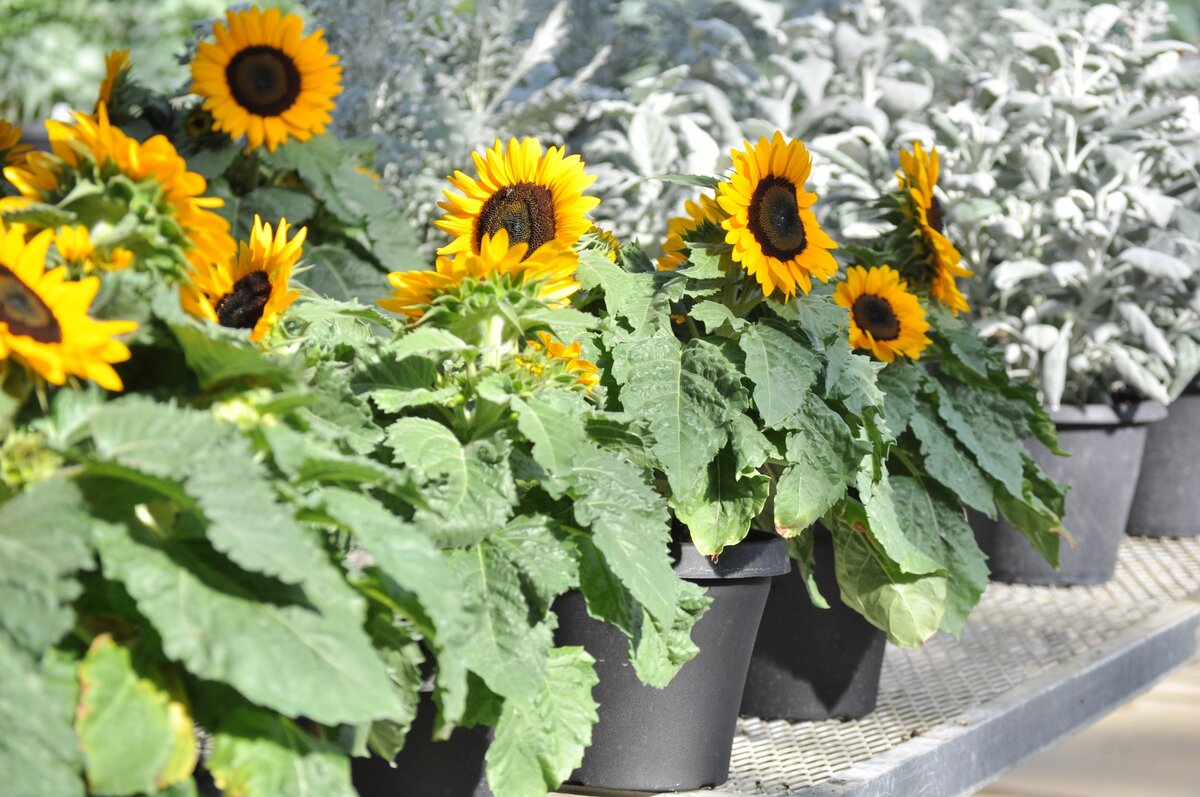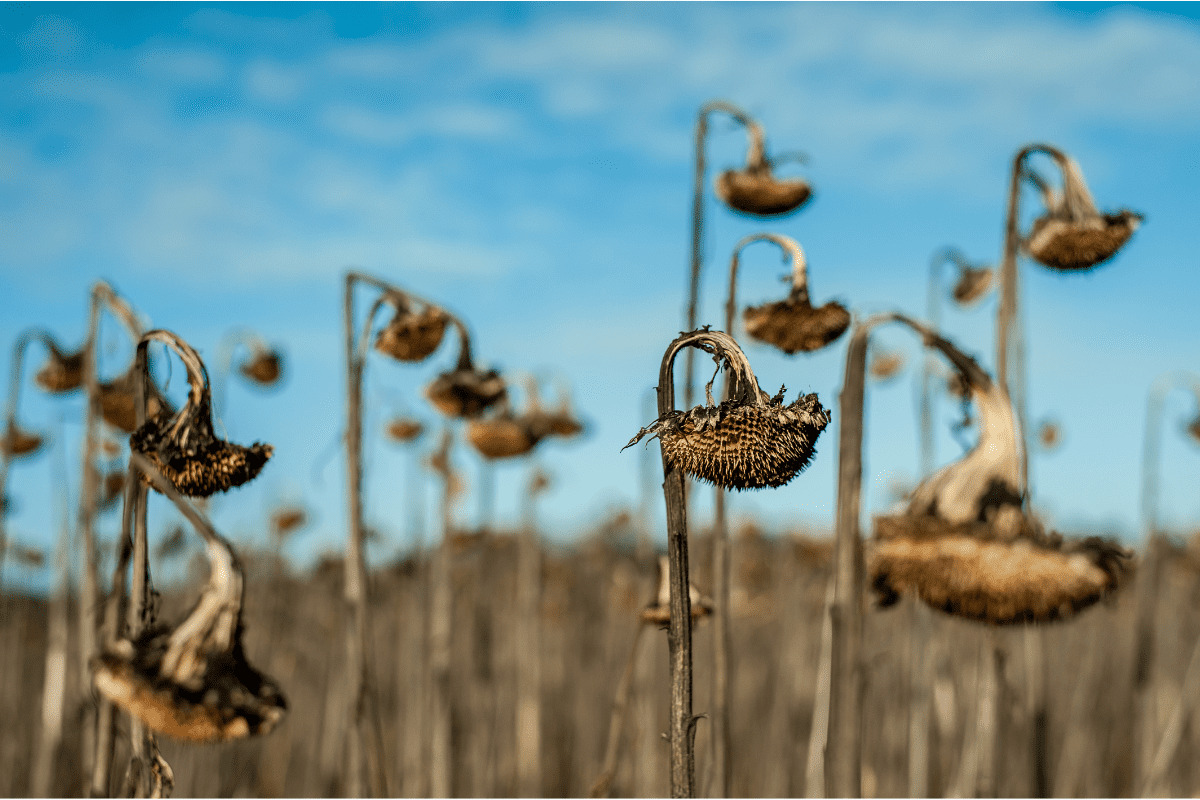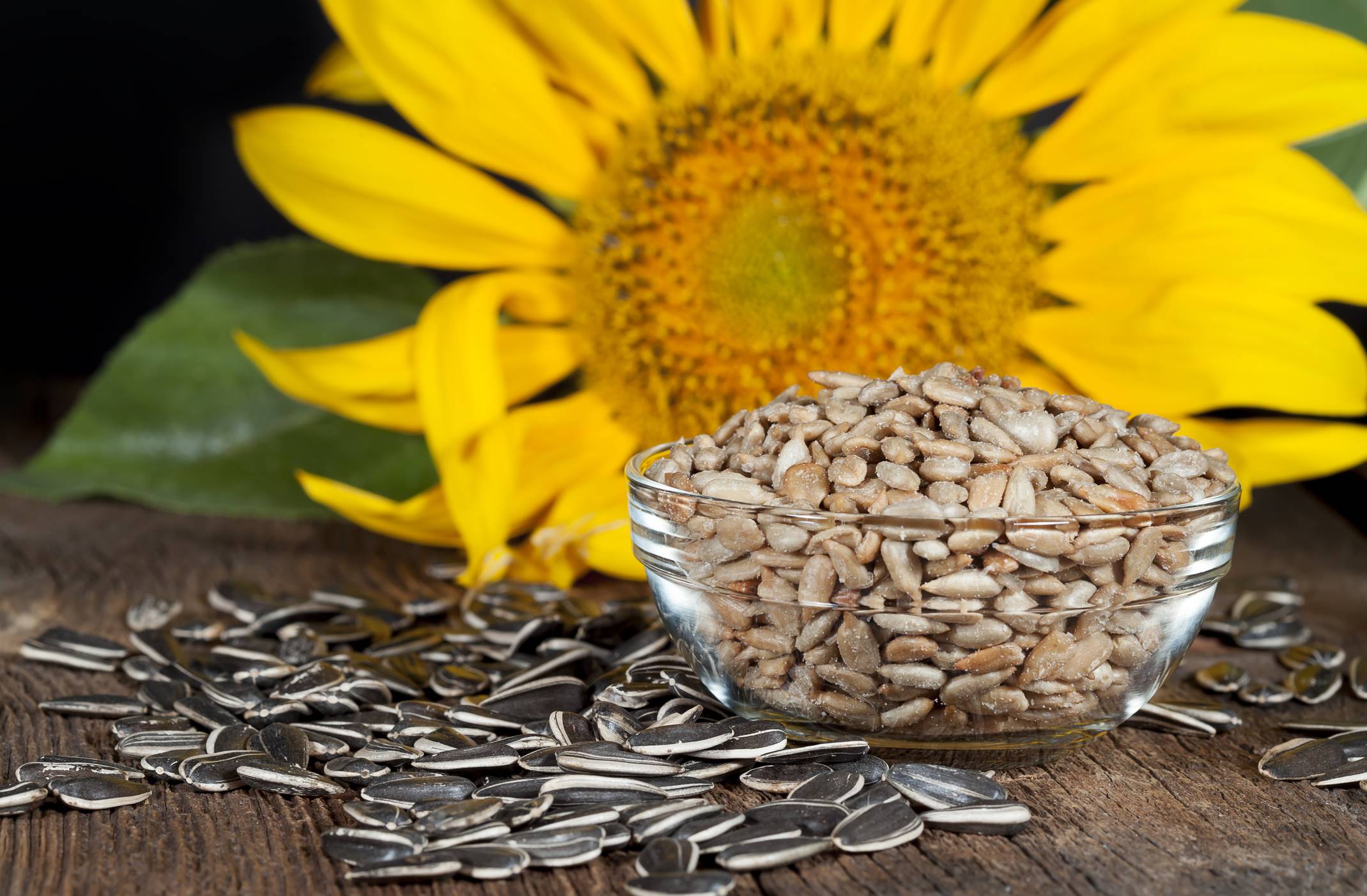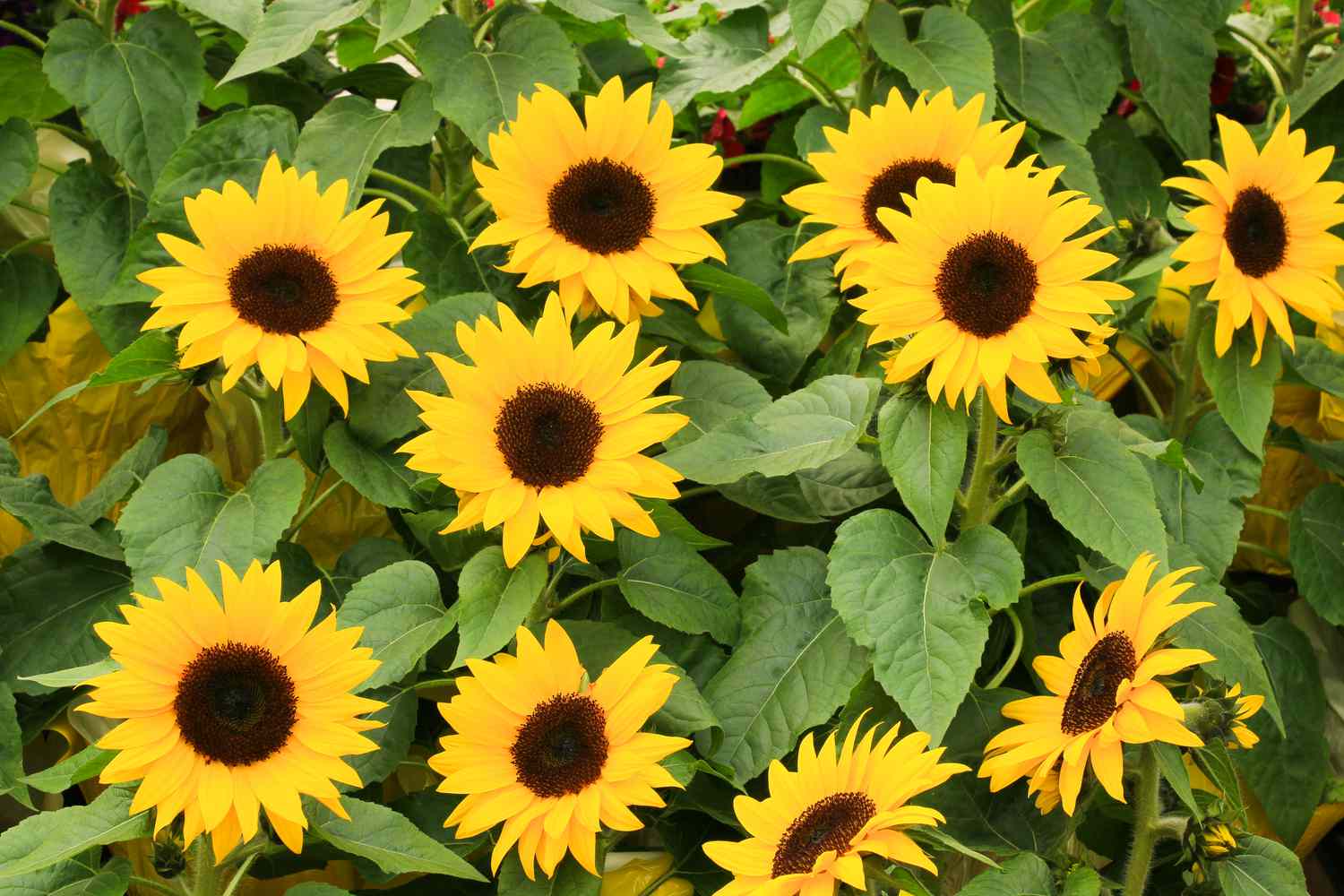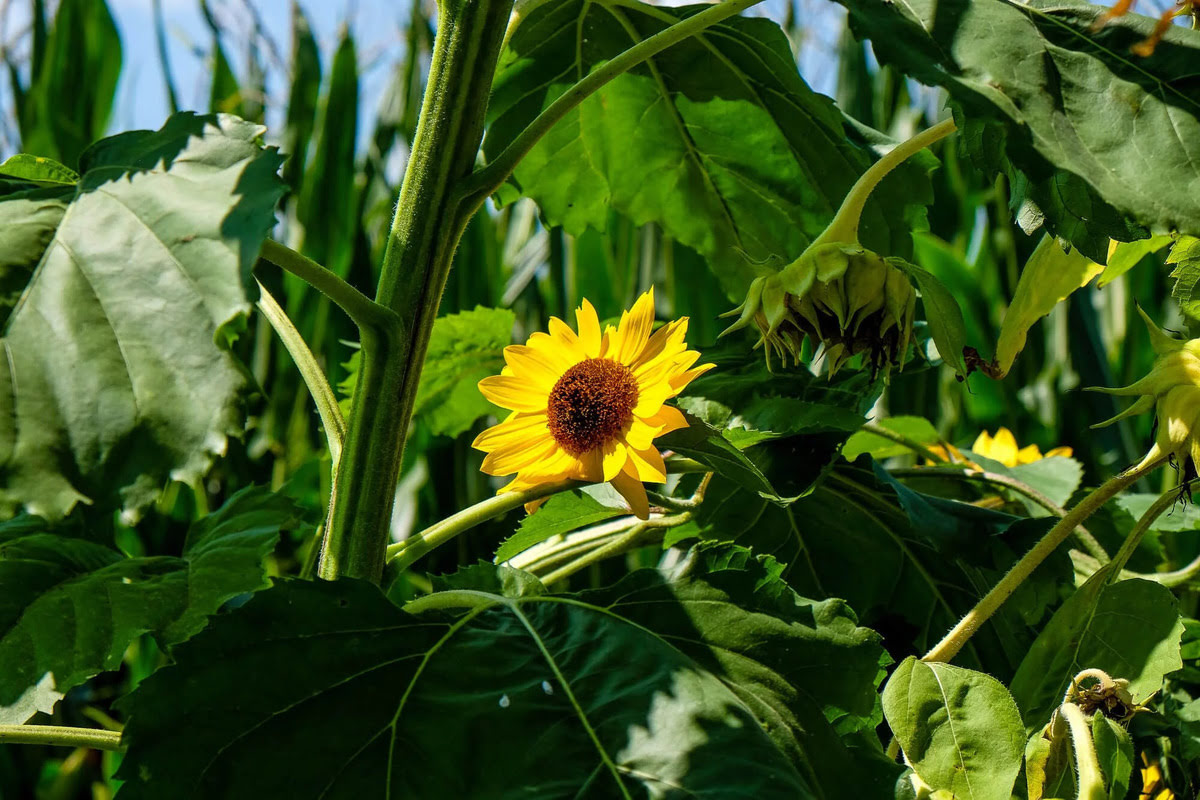Home>Types of Gardening>Ornamental Gardening>When Do Sunflowers Grow
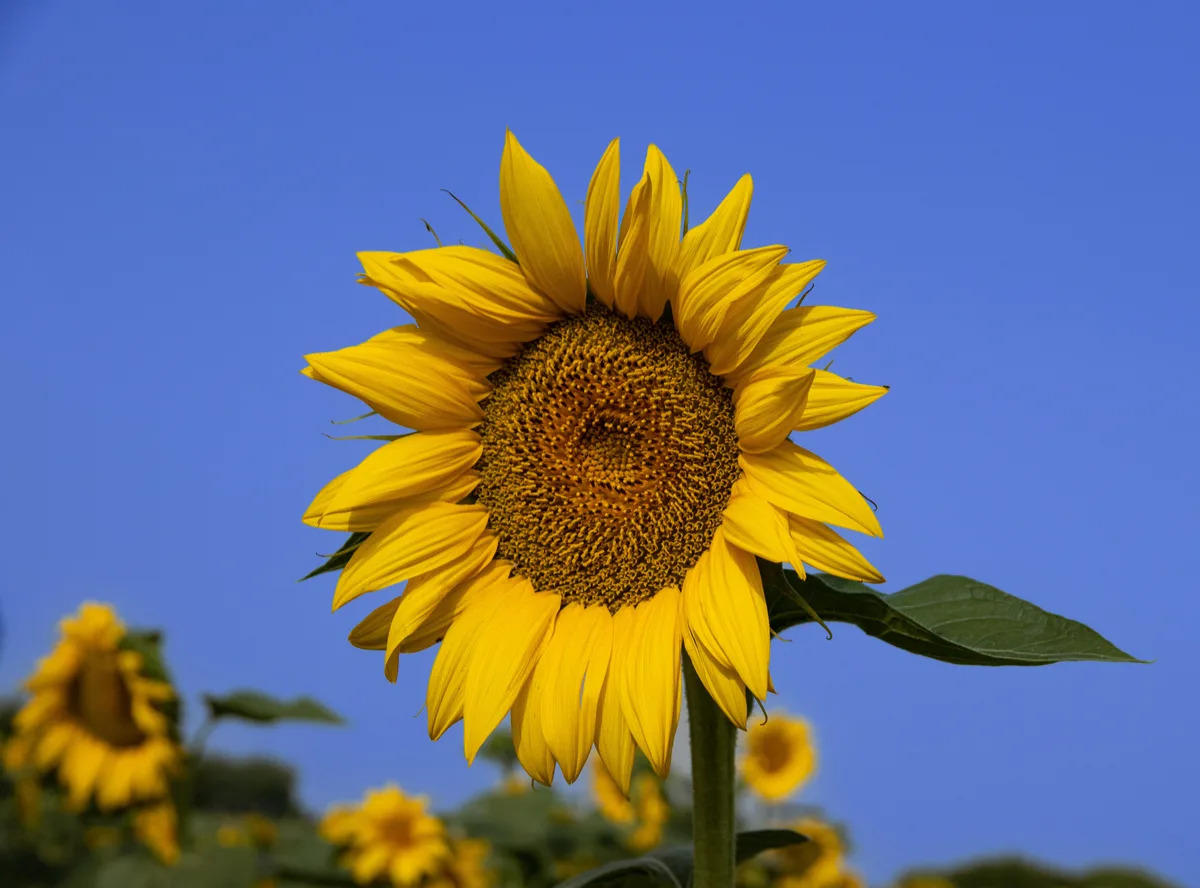

Ornamental Gardening
When Do Sunflowers Grow
Modified: February 10, 2024
Discover the best time for sunflowers to grow in your ornamental gardening. Learn the ideal conditions and tips for growing sunflowers successfully.
(Many of the links in this article redirect to a specific reviewed product. Your purchase of these products through affiliate links helps to generate commission for Chicagolandgardening.com, at no extra cost. Learn more)
Table of Contents
Introduction
Welcome to the world of ornamental gardening, where beauty meets nature in the most vibrant and captivating ways. One of the most iconic and loved flowers in this realm is the sunflower. With its towering height, cheerful yellow petals, and striking brown center, the sunflower is a true symbol of joy and summer.
If you are a gardening enthusiast or someone looking to add a touch of charm to your outdoor space, understanding the growth patterns and care requirements of sunflowers is essential. Whether you have a spacious garden, a small balcony, or even just a sunny windowsill, cultivating and caring for sunflowers can be a rewarding and enjoyable experience.
In this article, we will delve into the fascinating world of sunflowers, exploring their growth stages, the factors that affect their growth, and tips on planting and caring for these magnificent blooms. By the end, you will have a comprehensive understanding of how to grow sunflowers successfully and create a stunning display of nature’s golden beauty in your own backyard.
Understanding Sunflowers
Sunflowers, scientifically known as Helianthus annuus, are native to North America and have been cultivated for thousands of years for their versatile uses. While commonly associated with their tall stems and large, golden-yellow flower heads, not all sunflowers grow to the same size. Some varieties can reach towering heights of up to 12 feet, while others are more petite, growing to only a few feet in height.
These sun-loving plants derive their name from their unique characteristic of facing the sun as it moves across the sky. This phenomenon, known as heliotropism, occurs during the earlier stages of growth and helps the sunflowers maximize their exposure to sunlight for optimal photosynthesis.
One interesting fact about sunflowers is that they are not just a pretty face in the garden. Their seeds are highly nutritious and are used to produce cooking oil, bird feed, and snacks for human consumption. In addition, sunflower oil is a key ingredient in various beauty and skincare products.
Another aspect that sets sunflowers apart is their ability to attract pollinators. Bees, butterflies, and birds are drawn to the bright and vibrant colors of the sunflower blooms, making them an excellent choice for those looking to create a pollinator-friendly garden. This attraction to pollinators also helps in the reproduction process, as sunflowers rely on these creatures to transfer pollen from one flower to another.
The life cycle of a sunflower typically spans from planting the seeds to the growth of the mature plant, followed by the development of the flower head and eventual seed production. Understanding the growth stages of sunflowers is crucial for successful cultivation and care, and we will dive deeper into these stages in the next section.
Sunflower Growth Stages
Understanding the different growth stages of sunflowers is vital for providing the appropriate care and ensuring optimal growth and development. Let’s explore the key stages in the life cycle of a sunflower:
- Seed Germination: The first stage of a sunflower’s growth begins with the germination of the seed. Sunflower seeds typically germinate within 7 to 10 days when planted in well-draining soil and provided with adequate moisture and warmth.
- Seedling Stage: Once the seed has germinated, it gives rise to a small seedling. At this stage, the sunflower will start developing its first set of true leaves and establish its root system. It is crucial to provide the seedling with sunlight, water, and nutrients to promote healthy growth.
- Growth and Vegetative Stage: As the sunflower continues to grow, it enters the vegetative stage. During this phase, the plant focuses on developing its stems and leaves, gathering energy through photosynthesis. The height of the sunflower increases significantly during this period.
- Budding Stage: The budding stage marks a significant milestone in the growth of the sunflower. Buds start forming at the top of the plant, giving a hint of the vibrant flowers that are about to bloom. It is crucial to continue providing the sunflower with sunlight, water, and nutrients to support the bud development.
- Flowering Stage: This is the stage everyone eagerly awaits—the blooming of the beautiful sunflower flowers. The large, yellow petals unfold and reveal the iconic sunflower head, while bees and other pollinators are attracted to the nectar-rich blooms. The flowers typically face east and follow the path of the sun during the day.
- Seed Maturation Stage: After pollination, the sunflower undergoes seed maturation. The yellow petals start to wither and fall off, and the seeds in the center of the flower head begin to develop and mature. The back of the flower head turns from green to brown, indicating that the seeds are ready for harvest.
- Seed Harvesting: Finally, the sunflower seeds are ready to be harvested. Once the flower head has dried completely, carefully cut it off and remove the seeds. Store the seeds in a dry and cool place for future use or plant them to grow more sunflowers.
By understanding and appreciating each growth stage, you can better nurture your sunflowers and witness the remarkable transformation from a tiny seed to a magnificent and fruitful plant.
Factors Affecting Sunflower Growth
Several factors play a crucial role in the growth and development of sunflowers. Understanding these factors will help you provide the optimal conditions for your sunflowers to thrive. Let’s explore some of the key elements that influence sunflower growth:
- Sunlight: Sunflowers are true sun lovers and require at least 6 to 8 hours of direct sunlight daily. Without adequate sunlight, the plants may become weak, have stunted growth, or fail to produce abundant blooms.
- Soil Quality: Sunflowers prefer well-draining soil with a pH level between 6.0 and 7.5. Good soil fertility is also crucial for healthy growth. It is recommended to amend the soil with organic matter such as compost or well-rotted manure before planting to provide essential nutrients.
- Watering: While sunflowers are relatively drought-tolerant, they still require regular watering, especially during hot and dry periods. Adequate moisture is crucial for germination, plant establishment, and flower production. However, excessive water can cause root rot, so it’s important to find a balance and avoid overwatering.
- Temperature: Sunflowers thrive in warm temperatures, ideally between 70°F and 78°F (21°C and 26°C). They can tolerate some variations, but extreme heat or frost can adversely affect their growth and flower production.
- Air Circulation: Good air circulation helps prevent diseases and fungal infections. Plant sunflowers with adequate spacing to allow for proper airflow and reduce the risk of diseases like powdery mildew.
- Pest Control: Sunflowers can attract pests such as aphids, caterpillars, and bird damage. Monitoring for pests regularly and implementing appropriate pest control methods, such as organic insecticides or physical barriers, will help protect your sunflowers.
- Genetics and Varieties: Different sunflower varieties have varying growth habits, disease resistance, and flowering times. Choose a variety that suits your desired height, flower size, and growing conditions to ensure successful growth.
- Weed Control: Weeds compete with sunflowers for resources, including nutrients, water, and sunlight. Regular weeding or using mulch around the plants can help suppress weed growth and ensure your sunflowers receive the necessary resources for healthy growth.
By considering these important factors and providing the optimal conditions for your sunflowers, you can promote vigorous growth, vibrant blooms, and a bountiful harvest.
Planting Sunflowers
Planting sunflowers is an exciting endeavor that begins with careful preparation and consideration. By following these steps, you can ensure successful growth and beautiful blooms:
- Choosing the Right Time: Sunflowers are warm-season plants and thrive in temperatures above 50°F (10°C). It is best to wait until after the last frost date in your area before planting sunflower seeds. This will prevent any potential damage to emerging seedlings.
- Selecting a Location: Sunflowers require full sun exposure to thrive. Choose a location in your garden or outdoor space that receives at least 6 to 8 hours of direct sunlight daily. Ensure the area has well-draining soil to avoid waterlogging.
- Preparing the Soil: Sunflowers prefer loose and well-drained soil. Prior to planting, remove any weeds, rocks, or debris from the area. Loosen the soil to a depth of 12 to 15 inches (30 to 38 cm) and amend it with organic matter such as compost or well-rotted manure to improve soil fertility.
- Planting the Seeds: Sow the sunflower seeds directly into the prepared soil. Plant the seeds about 1 to 1.5 inches (2.5 to 3.8 cm) deep and space them 6 to 12 inches (15 to 30 cm) apart, depending on the variety. If you are planting multiple rows, leave enough space between the rows for easy access and airflow.
- Watering: After planting, give the area a thorough watering to ensure good seed-to-soil contact. Water regularly to keep the top inch (2.5 cm) of soil moist until the seeds germinate. Once the seedlings emerge, reduce the frequency of watering and only water when the soil feels dry.
- Providing Support: Depending on the variety and expected height, some sunflowers may require additional support. For taller varieties, install stakes or place trellises around the plants to prevent bending or snapping in windy conditions.
- Thinning: Once the seedlings have established their first true leaves, thin them out if they are too close to each other. This will ensure adequate space for each plant to grow and prevent overcrowding.
- Mulching: Consider adding a layer of organic mulch, such as straw or wood chips, around the base of the sunflowers. Mulching helps retain moisture, suppresses weed growth, and maintains a consistent soil temperature.
- Companion Planting: To attract pollinators and deter pest insects, consider planting companion plants like marigolds, zinnias, or lavender around your sunflowers. These plants can help create a more diverse and beneficial garden ecosystem.
By following these steps, you can set your sunflowers up for success right from the start and enjoy their stunning blooms throughout the season.
Caring for Sunflowers
Caring for sunflowers involves providing them with the essential elements they need to thrive and ensuring their well-being throughout the growing season. Here are some key care practices to keep in mind:
- Watering: While sunflowers are generally drought-tolerant, regular watering is still crucial, especially during hot and dry periods. Water the plants deeply at the base, aiming for the soil rather than the foliage. Avoid overwatering, as this can lead to root rot. Monitor the moisture levels and adjust the watering frequency as needed.
- Fertilizing: Sunflowers benefit from nutrient-rich soil. Before planting, incorporate organic matter into the soil to improve its fertility. Additionally, you can apply a balanced fertilizer or compost tea during the growing season to provide the necessary nutrients. However, be cautious not to over-fertilize, as this can result in excessive foliage growth and smaller blooms.
- Maintaining Weed Control: Regularly weed around your sunflowers to reduce competition for nutrients, water, and sunlight. Use organic mulch or a layer of straw to suppress weed growth and maintain a clean growing area. Be careful when weeding to avoid damaging the sunflower roots.
- Supporting Tall Varieties: If you are growing tall sunflower varieties, providing support is essential. Install stakes or place trellises near the plants early on to prevent wind damage and ensure the stems remain upright. As the plants grow taller, gently tie the stems to the support structure to keep them stable.
- Protecting from Pests: Sunflowers can be susceptible to pests such as aphids, caterpillars, and birds that may damage the blooms and overall health of the plants. Regularly inspect your sunflowers for signs of pest infestation and take appropriate measures, such as using organic insecticides or physical barriers, to control pests and protect your plants.
- Monitoring for Diseases: Keep an eye out for common sunflower diseases like powdery mildew or fungal infections. Maintain good air circulation, avoid over-watering, and promptly remove any infected leaves or flowers to prevent the spread of diseases. If necessary, apply organic fungicides as directed.
- Deadheading: Once a sunflower has finished blooming and the petals have withered, it is beneficial to deadhead the flower. Deadheading involves removing the spent flower heads to redirect the plant’s energy towards seed production and continuous blooming. This practice can prolong the flowering period and improve overall plant health.
- Harvesting Seeds: If you wish to harvest sunflower seeds for consumption or future planting, allow the flower heads to dry on the plant until the back turns brown and the seeds become hard. Cut the flower heads off and remove the seeds by rubbing or shaking them. Dry the seeds thoroughly before storing them in a cool, dry place.
By following these care practices, you can ensure that your sunflowers remain healthy, vibrant, and a delightful addition to your garden or outdoor space.
Harvesting Sunflowers
Harvesting sunflowers is an exciting and rewarding process. Watching the progression from a small seed to a towering plant with vibrant blooms is a testament to the beauty of nature. When the time comes to harvest your sunflowers, consider the following steps:
- Determining the Right Time: The ideal time to harvest sunflowers is when the back of the flower head turns from green to yellow and the seeds are fully developed and plump. Additionally, the petals of the sunflower will have dried and fallen off.
- Preparing the Tools: Before you begin, gather a pair of sharp garden shears or pruning clippers, a clean and dry container, and gloves to protect your hands.
- Harvesting the Flower Heads: Using the garden shears or pruning clippers, cut the sunflower stalk below the flower head. Leave a few inches of stem attached to the flower head for ease of handling.
- Drying the Flower Heads: Hang the harvested sunflower heads upside down in a cool, dry, and well-ventilated area. This allows the remaining moisture in the flower head to evaporate and ensures proper seed drying. You can use a string or wire to hang them from a secure spot, such as a shed or a garage.
- Extracting the Seeds: Once the flower heads are completely dry, gently rub or shake them to loosen the seeds. Place a clean container or a large bag underneath the flower head to catch the seeds as they fall.
- Removing the Debris: Separate the seeds from any remaining plant debris or chaff. You can accomplish this by handpicking or using a screen or sieve to separate the seeds from the unwanted material. Discard the debris and collect the clean sunflower seeds.
- Storing the Seeds: Store the harvested sunflower seeds in an airtight container, such as a glass jar or a sealable plastic bag. Keep the container in a cool, dry, and dark place to maintain seed viability. Label the container with the sunflower variety and the date of harvest for future reference.
- Using the Seeds: The harvested sunflower seeds can be used for various purposes. They can be consumed as a healthy snack, used in cooking and baking, or saved for next year’s planting. If you plan to use them for planting, ensure they are fully dry before storing them.
By following these steps, you can successfully harvest sunflower seeds and enjoy the fruits of your labor. Whether you use them for culinary purposes or save them for future gardening projects, the process of harvesting sunflowers adds another layer of joy to the experience of growing these magnificent flowers.
Conclusion
Ornamental gardening becomes a truly enriching experience when you include sunflowers in your repertoire. These stunning flowers, with their radiant yellow petals and impressive height, bring joy and beauty to any garden or outdoor space. From understanding the growth stages to caring for them throughout the season, sunflowers offer a rewarding journey for gardening enthusiasts and nature lovers alike.
By providing the essential elements of sunlight, well-draining soil, and proper watering, you can create an environment where sunflowers can thrive and showcase their vibrant blooms. Monitoring for pests and diseases, utilizing support structures for taller varieties, and implementing weed control measures are vital aspects of caring for sunflowers.
When the time comes, harvesting sunflowers offers a sense of accomplishment. By properly timing the harvest and following the steps to extract and store the seeds, you can enjoy the fruits of your labor in various ways, be it as a nutritious snack or for future planting endeavors.
So, whether you have a large garden, a small balcony, or a sunny windowsill, consider adding the beauty and charm of sunflowers to your ornamental gardening journey. With their captivating blooms, sunny dispositions, and delightful interactions with pollinators, these majestic flowers will surely bring a touch of cheer and a vibrant aura to your outdoor space.

